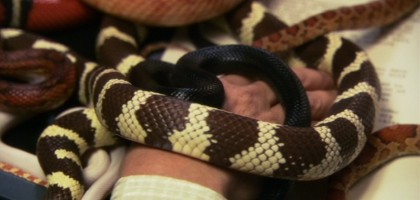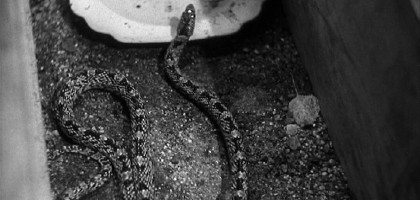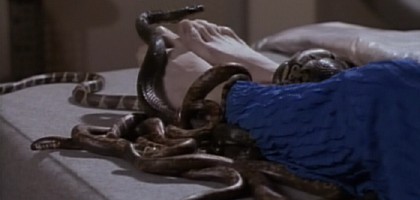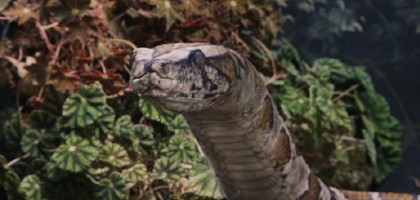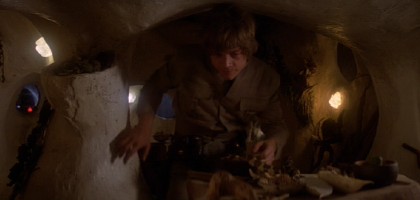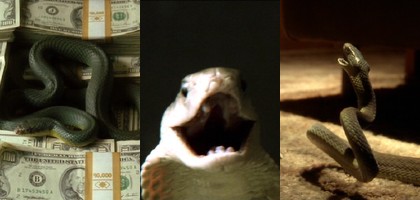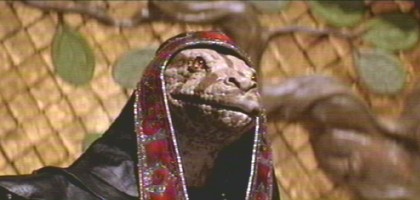Snakes on a Plane
- Year: 2006
- Format: Movie
- Buy It at Amazon.com
- View the IMDb Listing
- Categories: Animation and Animatronics, Biological Impossibilities, Help! It’s Harmless!, Pet Store Stand-ins, Snakesploitation Movies
- Posted on September 26, 2006
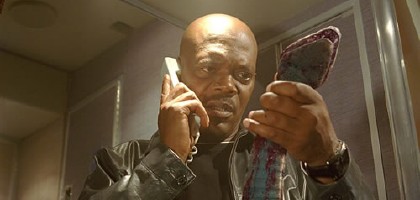
Admit it: you’ve been waiting for this one. Much has already been written about the snakes behind Snakes on a Plane, and the questionable snake behaviour and biology has been debunked elsewhere; I wrote something shortly after I saw the film myself. The key points:
- The real, live snakes were harmless and handled by stunt doubles or extras; the venomous snakes were either computer generated or shot in isolation.
- The real snakes were common pet-store varieties; I spotted Corn Snakes (Elaphe guttata) and several kinds of Common Kingsnake (Lampropeltis getula) and Milk Snake (Lampropeltis triangulum), for example.
- The aggressive snake behaviour was attributed to pheromones sprayed on leis, which is creative nonsense. Pheromones will make snakes horny at best, and no one pheromone would have the same effect across so many different species.
- The movie correctly points out that snakes aren’t normally that aggressive, hence the pheromone plot device.
- The computer-generated snakes were larger than nature — and faster. No matter how pissed, most snakes don’t move that fast. Except maybe mambas (Dendroaspis) and coachwhips (Masticophis), and I didn’t see any of those.
- Antivenom is easier to find than that.
- Snakes are illegal to keep in Hawaii.
- Pythons never eat fully grown adult males. Well, hardly ever. Yappy little dogs? Total python food. (At least I can hope.)

